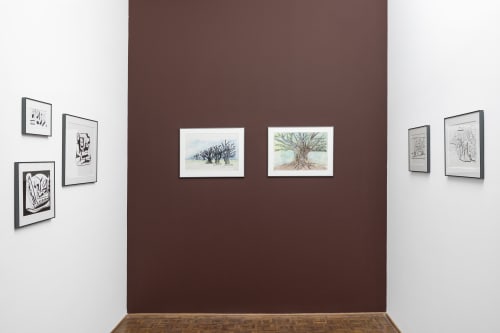Balkrishna Doshi’s free-flowing compositions are indeed steeped in a powerful push of memories from childhood, a time of unadulterated presence when our sensory relationships with the world were more potent than they are in our adult lives. His work also grapples with the philosophical questions that come up as one ages – a loss of interest in worldly things coupled with a nostalgic yearning – often pursued by accessing the profound, immeasurable world of the inner self. The surrealist nature of his compositions is ignited by a rich subconscious, with space, form, rhythm, material and location contributing to making memory a tool in and of itself with which to pursue the magic of personal re-discovery. While expressing spontaneity and defying structure, Doshi’s attention to the line through curvatures implies recognition of collective flow – the various movements of the hand, the body, the psyche, the intellect, as well as the movement of the line and finally the image itself. Armed with sensory impressions, Doshi’s self-generative works are practically animist in nature, recognizing the life force and connected nature of our multiple existences, through various phases of life. They are intended as an act of service; as instruments of change, they are non-imposing and non-interfering as is the flow of nature, approached ritualistically through a sacred practice. A holistic approach to mark-making and creation enables him to seek out what’s missing or unusual through his gestures, and a fluidity is inculcated between how all things seem to move through dialectics – the inside–outside, the present–absent, the material–message.

